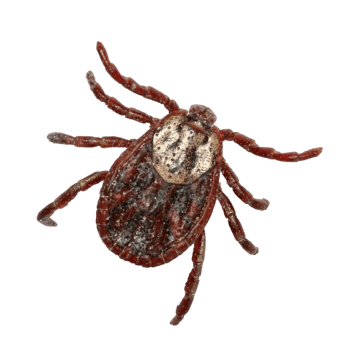A Closer Look with Brittany Campbell

Many ticks that spread disease to humans are becoming more prevalent and expanding into new territories. Tickborne disease has increased 19% from the years 2009-2019, according to data collected from the Centers for Disease Control and Prevention. Even more shockingly, ticks are the number one spreader of vector borne disease in the US – accounting for 77% of all reported cases.
The blacklegged tick (Ixodes scapularis), sometimes also referred to as the deer tick, gains the number one spot because it is the main vector of the most common tick borne-disease in the US, Lyme disease. This tick is found all along the eastern United States and the Great Lakes region. The adult female ticks emerge in early spring and lay eggs with nymphs reaching large numbers in June and July. They will remain active into the fall.
We are finding tick species in new areas never found before. In areas of the Northeastern US, expanded forested areas provide increased habitat for ticks and their hosts, like deer, to live. Weather can be another factor, with prolonged warm seasons and heavy rainfall creating an ideal environment for some tick species to move further north and expand their territory. As ticks continue to move, they will also carry disease into uncharted territory with them.
Red meat allergy, also known as alpha-gal syndrome is linked to the bite of lone star ticks. This allergic reaction happens when people eat red meat which contains the carbohydrate molecule alpha-gal. When someone develops an allergy to red meat, they can no longer consume red meat or other products that contain alpha-gal, especially if they have severe reactions. There is no known cure to red meat allergies and the best treatment is to avoid bites from ticks.
There is only one tick that is capable of living and breeding indoors, the brown dog tick (Rhipicephalus sanguineus). These ticks are often found in homes with pets and in dog boarding facilities, hence they are also referred to as kennel ticks. They can transmit disease, including Rocky Mountain spotted fever to humans and canine ehrlichiosis and canine babesiosis to dogs.
Subscribe to our website and follow us on Facebook & Twitter for the latest and greatest promotions, product launches, product info, "A Closer Look" with our amazing Technical Service team and industry news!